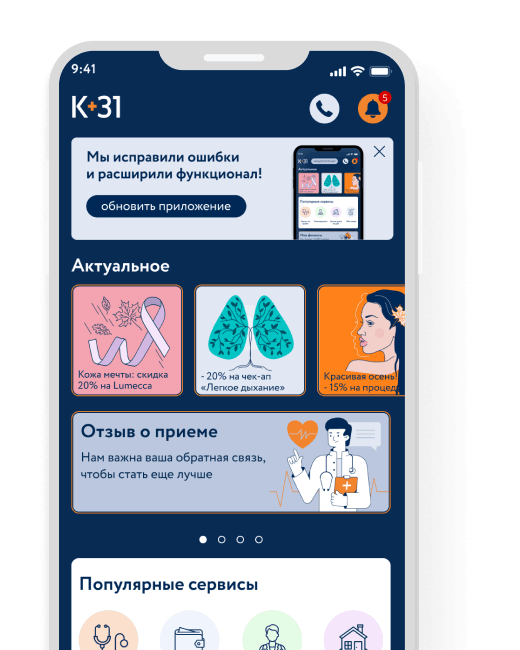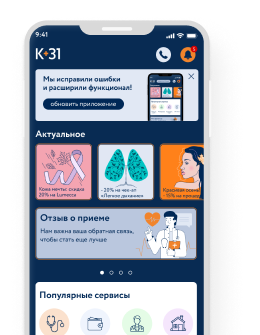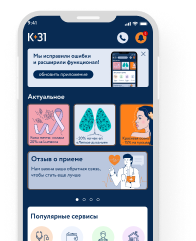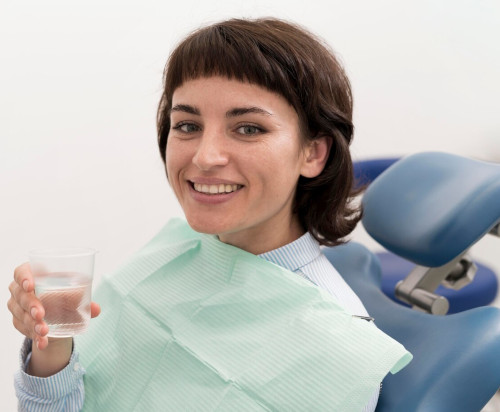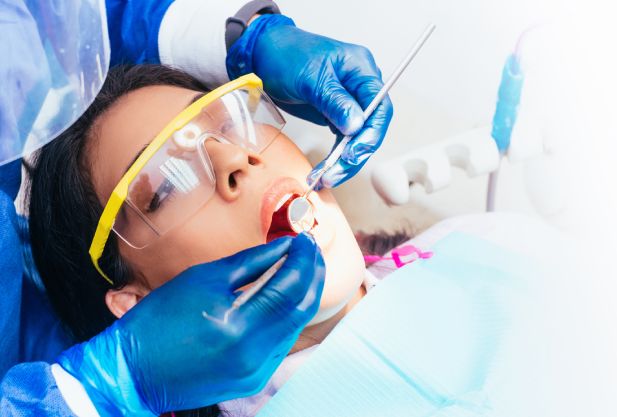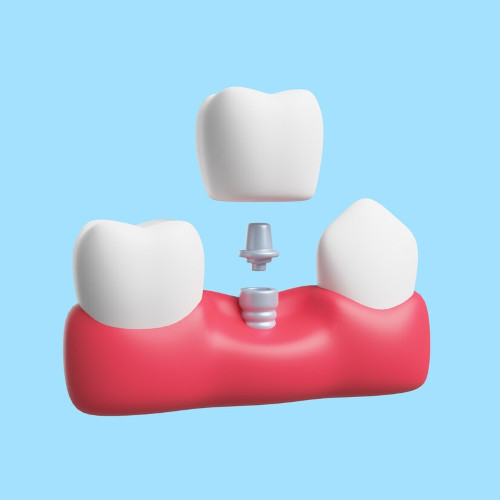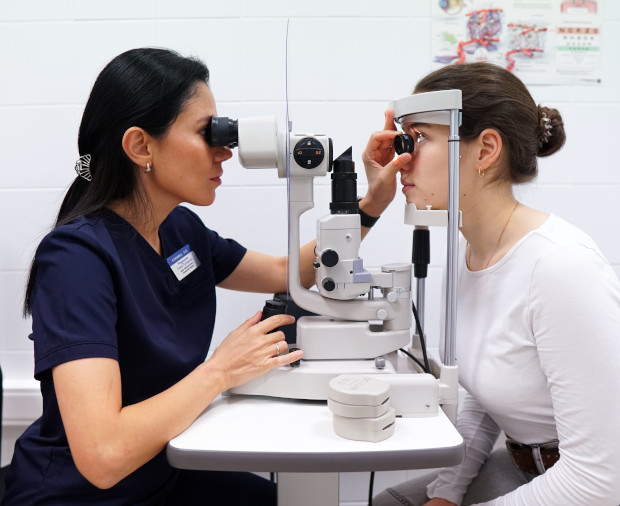Implantation of lower teeth
The teeth on the lower jaw experience greater stress than the upper ones. Therefore, the loss of even one lower tooth causes problems with bite and diction. There are different methods of prosthetics of lower and upper teeth. The choice depends on the number of lost chewing elements and the anatomical features of the patient's jaw.

specialists

equipment

treatment
Features of implantation of lower teeth
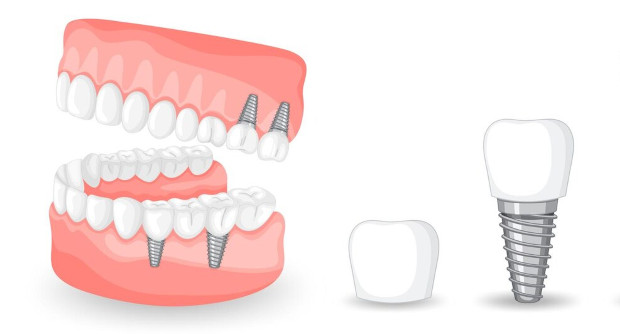
When one or two front teeth are lost, one-stage implantation is often used. This means that the implant is installed in the recently removed tooth socket.
A temporary prosthesis is immediately fixed to it, which is replaced by a permanent one after 2-6 months - after complete osseointegration (the implant has taken root in the bone).

For prosthetics of chewing teeth of the lower jaw, a two-stage technique is most often used. First, an implant is installed, which is left without load until complete engraftment. A permanent prosthesis is mounted on it.
This technique ensures maximum stability and durability of the structure.

With complete edentia, dense mandibular bone allows using various prosthetic techniques.
All-on-4 implantation (all-on-four)
The All-on-4 method is designed for patients with slight bone atrophy. In this case, only 4 implants are installed:
- Two in front vertically
- Two on the sides at an angle
This installation allows you to securely fix the implants in dense bone layers. Immediately after the operation, a conditionally removable denture is installed (it can only be removed and cleaned by a dentist). It is securely screwed to the implants - this makes care easier.

All-on-6 implantation
The All-on-6 method is relevant for more pronounced bone atrophy. 6 implants are installed: 2 in the front and 2 on the sides. This ensures a more secure attachment of the prosthesis. First, a temporary prosthesis is installed, which is later replaced with a permanent one.
Due to the larger number of implants, there is an even distribution of the load on the jaw.
Zygomatic implantation
Zygomatic implantation is used for significant bone atrophy, when other methods are not suitable. The peculiarity of this technique is the installation of elongated implants in the zygomatic bone. This allows you to bypass areas with a lack of bone tissue.
After installing the implants, a temporary prosthesis is immediately fixed, which is later replaced with a permanent one.
One of the main advantages of zygomatic implantation is that it does not require bone augmentation.
Types of implantation
Classic (two-stage)
Classical two-stage implantation involves the alternate installation of an artificial titanium pin and delayed fixation of the crown part of the lost tooth. This method is used in the absence of one or more teeth, as well as in cases of complete edentia.
First, the surgeon inserts the implant into the bone. After this, the patient undergoes the stage of osseointegration (implant engraftment), which takes 2-5 months. Then the surgeon installs the abutment (an adapter between the implant and the crown) and the crown part of the chewing elements.
Advantages of classical prosthetics:
- High reliability (delayed loading minimizes the risk of implant loosening)
- Applicability in complex clinical cases (can be used with atrophied bone)
The main disadvantage is the long treatment period (6-8 months). Another disadvantage of this method is its high cost.
One-stage
One-stage “turnkey” implantation involves installing a prosthesis and a temporary crown in one visit. This method is minimally invasive: it does not involve peeling off the gums and subsequent suturing.
The temporary prosthesis is fixed immediately after the implant is installed. This allows you to avoid aesthetic defects and reduce the time it takes to restore the dentition.
General information about the procedure
Answers to popular questions
Specialists from the dental clinic “K+31” (Moscow) have addressed the most common questions about implantation of lower and upper teeth.
How to behave before and after dental implantation?
It is recommended to eat a little before the procedure - this will help avoid dizziness during the procedure. If the patient is very worried, a sedative can be taken 30-40 minutes before the visit to the doctor.
After the prosthetics, you need to take a painkiller. You should also apply cold to the site of the operation, avoid physical activity and follow the recommendations for oral hygiene.
Is it possible to install an implant at the same time as a tooth extraction?
What is a surgical template and why is it needed?
A surgical template is a special device that helps to accurately install dentures in the right place, at the right angle and to the right depth. The template is made based on 3D modeling and allows for maximum accuracy. This is especially true in complex cases and when installing a large number of prostheses.
Please check the prices for implantation of lower (and upper) teeth in our dentistry on the website and by phone. For residents of Moscow and the region, the prices are affordable.
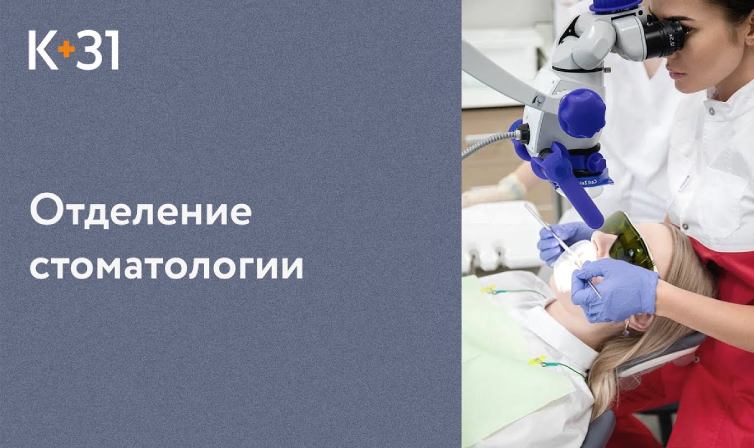
Modern methods of diagnostics and dental treatment at "K+31"

This award is given to clinics with the highest ratings according to user ratings, a large number of requests from this site, and in the absence of critical violations.

This award is given to clinics with the highest ratings according to user ratings. It means that the place is known, loved, and definitely worth visiting.

The ProDoctors portal collected 500 thousand reviews, compiled a rating of doctors based on them and awarded the best. We are proud that our doctors are among those awarded.
Make an appointment at a convenient time on the nearest date
Price
Other Services

